Compact Sportage makes large impression
Filed under: Equinox, Weekly test drives, Autos
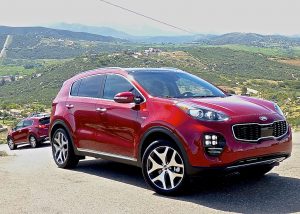
The 2017 Kia Sportage showed its turbocharged flair in the Southern California mountains, but is equally at home on suburban roadways.
By John Gilbert
It’s difficult enough for a car-maker to try to compete in the most intense segment in the industry, but for Kia it’s even more of a challenge, because it had to additionally compete with Hyundai, its South Korean partner and benefactor, before coming out with the 2017 Kia Sportage.
Compact crossover SUVs are currently the rage in automotives, and finally we’ve got a trend that makes sense. If larger or midsize SUVs have more space than cars and can haul everything at once, they also cost more money, require larger engines and therefore suffer when it comes to fuel economy, and they are more difficult to drive in congested traffic, let alone park.
The trend a decade ago to downsize from large SUVs to midsize was, therefore, logical and made economic sense. Whne the trend continued, down from midsize to compact crossover SUVs (CUVs), they proved enormously popular. If the room is adequate, the compacts could boast of much better sticker prices, and sportier handling with smaller, peppier and more fuel-efficient engines.
A perfect example is the 2017 Kia Sportage, the compact little brother to the solidly entrenched midsize Kia Sorento. It is a parallel vehicle to Hyundai’s Tucson, but there are significant differences, leaving both with distinct advantages.
Hyundai took over Kia almost a decade ago, and the two have been raised as separate but equal companies, both benefitting by the other’s successes. Hyundai was on the verge of an engine-making breakthrough right about then, and Kia came along with some equally brilliant design ideas. That helped make it more of a merger than a takeover, and both kept turning out exceptional vehicles from the smallest compact cars up through luxury vehicles, and with SUVs that filled all the required gaps. Read more
Late summer lets Fiat 124 Spider roll
Filed under: Weekly test drives, Autos
By John Gilbert
When summer lingers into fall, and summer-like days reach into November, it’s the time fond memories are rekindled. Similarly, whenever the term “sports car” is mentioned in my presence, I slip into an instant reverie about a curvy roadway on an autumn afternoon, sunshine everywhere and colored leaves scattered all around.
Into that pastoral scene comes a two-seat roadster, top down, engine smoothly sounding out its powerful potential while being kept within the restraints of a light right foot. As the roadster approaches, it carves the curvature of the roadway perfectly, and as it passes, it leaves a swirling wake of blowing leaves.
Now THAT’S what a true sports car should be. It’s always been that way in my mind, and this autumn of 2016 is the perfect scenario, because in the Northland, instead of Gales of November, we’re all pretty astonished that we’re watching thermometers rise into the 60s.
If it’s a perfect scenario for a roadster, there also are a couple of roadsters that perfectly fit the scene as well. We all know and love the Mazda MX-5 Miata, the most enduring affordable sports car on the planet. And the newly redesigned Miata now has a sibling, in disguise this time around — the Fiat 124 Spider.
Back when Fiat used to send cars to the U.S. in the 1960s, one of the most popular was the Fiat 124, both in coupe and roadster form. The coupe was a 2-plus-2 with an actual rear seat. The roadster, however, was the Spider — a true sports car, with a soft top that could be stowed behind the two bucket seats, and a willing and great-sounding 4-cylinder engine.
Fiat is making its return to the U.S., with its little compact 500 sedan, and all its derivatives, and now, for 2017, the return of the 124 Spider. To create the new Spider, Fiat worked out a deal with Mazda for the new MX-5 Miata platform. But it wasn’t content to just rebadge the Miata and use its splendid Skyactive 4-cylinder engine. Instead, Fiat pulled out its own 1.4-liter 4-cylinder from the Fiat 500 Abarth pocket-rocket, and fitted it into the new 124.
Read more
Hellcat is ultimate Challenger big-boy toy
Filed under: Weekly test drives, Autos
By John Gilbert
Dodge intends to end production of the Viper sports car when the currentBu supply runs out. But if it’s painful to accept that the Viper’s time has elapsed, so to speak , it’s easier to accept if you’ve driven the Dodge Challenger SRT Hellcat.
The two-seat Viper has an overwhelmingly powerful 8.4-liter V10 engine delivering 645 horsepower and 600 foot-pounds of torque, but it can’t match the bark, or the bite, of the Challenger Hellcat. Lighter and leaner, the 2-plus-2 Challenger has a highly refined 6.2-liter Hemi V8, supercharged to generate 707 horsepower and 650 foot-pounds of torque, meaning the Challenger Hellcat’s bite makes it the most powerful production car in the country.
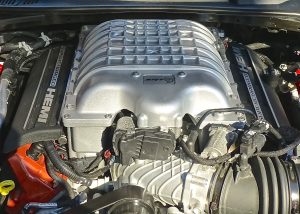
Hellcat’s heart is a 6.2-liter supercharged Hemi V8, with 700 horsepower and 650 foot-pounds of torque.
No less impressive is its bark. Turn it on, and the Challenger Hellcat will turn you on, with a soul-stirring roar that shakes the ground and rattles the walls and leaves you smiling with relief, knowing you didn’t blow out any of the neighborhood windows.
The Viper is a harsh, no-compromise brute, while the Challenger can be bought mild, with a supple suspension under the base 3.6-liter V6, or the 5.7 or even 6.4 ScatPak V8s. But when you select the SRT Hellcat’s supercharged and specially built 6.2 liter V8 gem, you are at the pinnacle.
The Challenger is Dodge’s future-retro coupe that as a faithful reproduction of the 1970s Trans-Am coupes, clearly beats both the Mustang and Camaro. It also has become the largest-selling car in Dodge’s livery. To beat the competition in performance will cost you, of course.
In basic V6 form, a Challenger provides the same look for under $30,000. Moving up past the normal Hemi to the Hellcat moves the sticker price up, and up again, to $62,495. The stunning red Hellcat as-tested during a week on the North Shore of Lake Superior and the cliffs of Duluth was an SRT Hellcat with a sticker of $71,370. That is still $25,000 or so less than the most basic Viper, however, and it fills up all your known senses and lets you discover a few you didn’t know you had. Read more
2017 Alltrack could renew trust in VW
Filed under: Equinox, Weekly test drives, Autos
By John Gilbert
If it looks like a Sportswagen, has the same utility as a Sportswagen, and goes like a Sportswagen, it must BE a Sportswagen, right?
Not necessarily. It might also be an Alltrack. Volkswagen is expanding the array of solid and substantial vehicles under the Golf brand name by adding a new and much more capable wagon-like vehicle named the Alltrack for 2017.
While it certainly resembles the venerable and popular wagon that used to be a Jetta but recently changed over to Golf livery, the Alltrack comes on the same MQB platform, bolstered with undercarriage armor plating, and with standard 4Motion all-wheel drive, at a bargain price. The price of the basic S model starts at $25,850 for the 6-speed stick shift, rising to $26,950 for the upgraded SE model, and $32,890 for a fully loaded SEL.
All Alltrack models come equipped with VW’s slick, high-tech 1.8-liter direct-injected and turbocharged 4-cylinder gasoline-sipping engine. No mention of the lack of availability of any turobdiesels, which, under the circumstances, is not surprising.
The surprise, to me, is that VW is going to continue offering the Golf Sportwagen, which is exactly the same length and, at a glance, has the same look, but lacks the impressive off-road capabilities. In my naivete, it seemed to make sense to plug in a couple versions of the Sportwagen as the entry-level Alltrack, but that won’t be happening. The Sportwagen comes with either base front-wheel drive or the upgraded 4Motion model, the Sportwagen S Sport.
Five waves of automotive journalists converged on Seattle for the introduction of the Alltrack, with the added lure of VW’s annual all-model presentation for 2017. We spent one day cruising across the harbor from Seattle on the Bainbridge Island Ferry, and drove most of the day around the twisty rural roads of Bainbridge Island as well as negotiating a rugged off-road course. Back to the ferry and Seattle, and the next day we drove up to Snoqualmie, where we found the rest of the VW fleet parked at the Mount Si Golf Club for our use. Read more
Take a roundabout visit to Spain
Filed under: Equinox, Features, Autos
By John Gilbert
ESTEPONA, Spain
Volvo took a roundabout route to developing its impressive new S90 sedan — first building the XC90 SUV, then making the S90 virtually a sedan-size derivative — and the introduction test drive of the carliterally took us on a roundabout route.
The area we visited, along the Spanish Riviera between Malaga and the resort city of Estepona, would seem to indicate that Spain might lead the world in “roundabouts,” those intersection replacements that turn important roadway interchanges into forced-slowdown circles with various inlets and outlets. In congestion, of course, entering a rotary can be dicey and exiting can be more like an escape.
In southern Spain, it seemed as though nearly every exit from a freeway sent you into a roundabout, which in turn distributed traffic in any and all directions. We weren’t aware of all that when we first arrived in Malaga, then rode a coach bus to our luxurious Kempinski Hotel Bahia in Estepona.
Our wave of auto journalists gathered to leave our for dinner at El Pescadoran, where we learned another Spanish tradition. You sit family style, and waiters bring out large platters or bowls of delectable food. Unwilling to leave any, we ate virtually every morsel, then the waiters took the platters away and replaced them with more platters of different delectable items.
The lengthy menu we had seen, briefly, was impressive, but the reason nobody asked us for our selections was they intended to bring us ALL of the selections. Next morning, we had some discussions, and then we were off on Leg 1 of our 4-Leg test drive. Three of the legs would be in S90 sedans, and the fourth in the V90, a slick and sleek station wagon that seems much longer than the sedan, but actually is 3 inches shorter.
My driving partner was Parks McCant, a tall fellow I’d met at the Malaga, Spain, airport, as we joined forces hoping to form a posse that might locate a person wielding a Volvo sign to direct us to a bus that might convey us to our hotel. We struck a quick and easy relationship, and, because he’s 6-foot-6, I knew he would provide real-world evidence of adequate head and legroom in our test cars.
I got behind the wheel first, and after agreeing on the luxurious comfort enveloping us, and the impressive ergonomics of the controls and other features, we were off.
Our start was so intriguing we decided to repeat it three or four times — involuntarily, of course. Instead of the usual direction book, Volvo installed all the turns for the route into the navigation system, which is a great idea. A pleasant, soothing female voice suggested when to get into the right lane, prepare to turn, and then turn.
We only went a mile or so and were instructed to exit. At the top of the exit ramp we found our first roundabout. The Nav Lady told us to take the third exit from the roundabout, which we did. We should have taken the second, but we didn’t know that, so we trusted the instructions.
The highly efficient Nav Lady, with proper Scandinavian courtesy, didn’t tell us we had fouled up, but merely directed us back on course. So we thought we were merrily on our way, following a sequence of directions to cross a bridge to another roundabout, followed by directions to another roundabout, then a third roundabout. That got us back near our starting position, and because it was all pretty unfamiliar, we sailed off again. We followed the same instructions the second time, and it wasn’t until partway through the third lap around the same sequence of roundabouts that we realized we were repeating our mistake.
Somehow, the wrong instruction trapped in a sequel-with-roundabouts of the Bill Murray movie “Groundhog Day,” where the star is destined to repeat everything, day after day, trapped in some cosmic vortex. Read more


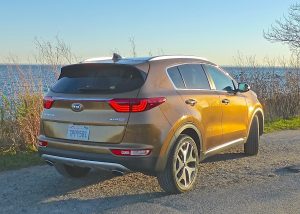
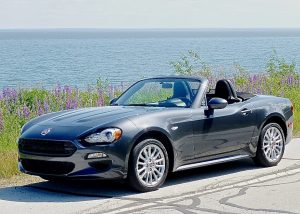
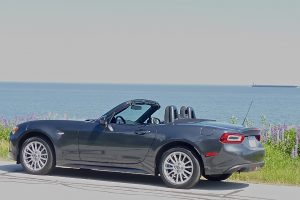
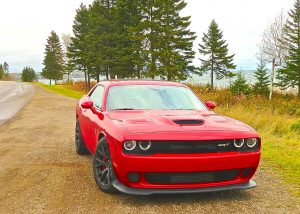
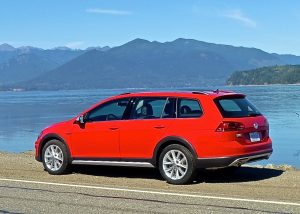
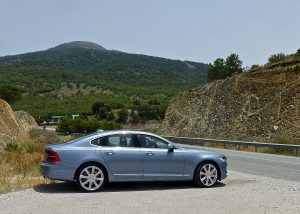
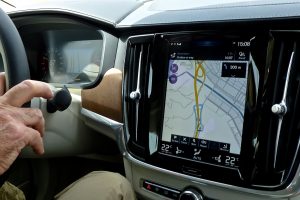


 John Gilbert is a lifetime Minnesotan and career journalist, specializing in cars and sports during and since spending 30 years at the Minneapolis Tribune, now the Star Tribune. More recently, he has continued translating the high-tech world of autos and sharing his passionate insights as a freelance writer/photographer/broadcaster. A member of the prestigious North American Car and Truck of the Year jury since 1993. John can be heard Monday-Friday from 9-11am on 610 KDAL(www.kdal610.com) on the "John Gilbert Show," and writes a column in the Duluth Reader.
John Gilbert is a lifetime Minnesotan and career journalist, specializing in cars and sports during and since spending 30 years at the Minneapolis Tribune, now the Star Tribune. More recently, he has continued translating the high-tech world of autos and sharing his passionate insights as a freelance writer/photographer/broadcaster. A member of the prestigious North American Car and Truck of the Year jury since 1993. John can be heard Monday-Friday from 9-11am on 610 KDAL(www.kdal610.com) on the "John Gilbert Show," and writes a column in the Duluth Reader.